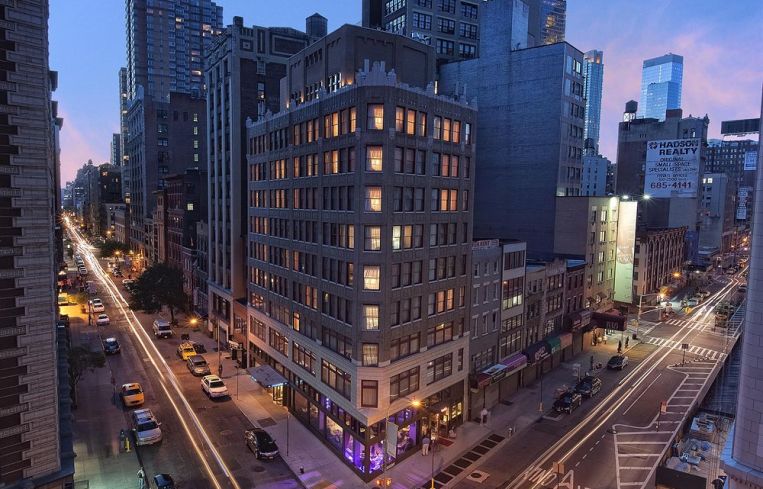A Glut of NYC Hotels Is Making Some Hospitality Experts Throw Around the ‘B’ Word
By Terence Cullen June 10, 2015 9:00 am
reprints

Get a room, New York City. There’s an abundance of them.
A city that was short on hotel supply just a few years ago could now be looking at a bubble, based on pumped-up speculation and forces outside of the hospitality industry.
In the last seven years—due in part to an explosion in demand thanks to a weak dollar and a diversified hotel market—the number of bed nights (industry speak for nights spent in a room) increased by almost 8 million, from a total of 33 million in 2009 to 40.6 million in 2014, according to data collected by hotel bench-market STR.
Supply is going to reach its peak this year, according to a May report by STR, and will continue to increase slightly in 2016 before leveling out. During that same time, the report found, demand for those rooms is slated to dwindle.
“Even though it may be a bubble, it’s going to be like all the bubbles in New York City,” said Robert “Toshi” Chan, who owns the Flatiron Hotel. “You’re going to see a relatively moderate drop. I do believe in a strong shake down in the hotel market, the weaker players might have some consolidation. They may not be able to survive in a downturn.”
For now, the Big Apple is still seeing its best numbers in terms of tourists flocking into the city. About 54.3 million visitors came through the five boroughs last year, according to city tourism booster NYC & Company. That’s almost a 25 percent jump from the 48.5 million people who visited in 2009.
Those annual numbers are usually boosted by people coming in the summer when schools are off. But hospitality experts think that might not be the case this year—especially for foreign travelers—because the U.S. dollar is getting stronger against other currencies.
Those foreign travelers mainly from Western Europe, China and Brazil on average make up 20 percent of the city’s annual tourists, according to an analysis of NYC & Company’s numbers.
Sean Hennessey, the founder of hotel advisory Lodging Advisors, said while demand was still high, changing currencies could make what was once a steal with the euro a few years ago into a hefty chunk of change.
“I’ve got to believe it’s not going to be helpful to attracting foreign tourists,” Mr. Hennessey said. “If you’re in from London or Europe you’re not saying New York is a bargain now.”
Which is not to say there aren’t plenty of real estate folks who dismiss the implications of the weak euro, like Barry Berkowitz of Newmark Grubb Knight Frank. He said there is usually another group waiting in the wings ready to take center stage of the industry.
“You always have influx of different people coming in,��� he said. “There always seems to be a replacement.”
Revenue per available room, or RevPAR, has also performed poorly since the height of the great recession, when it was cheaper for foreigners to come stay in the city. RevPar skyrocketed 12.5 percent between 2009 and 2010, according to STR data. While the average annual number is still higher than 2010’s $187.38, increases have been paltry. Between 2013 and 2014, RevPAR increased a mere 2.3 percent from $218.47 to $223.46.
‘Your mortgage doesn’t go down even though your revenue does.’—Sean Hennessey, Lodging Advisors
Falling RevPAR and general profitability can become problematic, Mr. Hennessey said, especially when you factor in the fixed fees, such as wages, food and drink, as well as upkeep.
“That is certainly putting a lot of New York properties under pressure to manage their profitability,” he said. “Your mortgage doesn’t go down even though your revenue does.”
The fault might be in hotel expansion to the outer boroughs, as well as the emergence of boutique and inexpensive hotels. An April report by the Long Island City Partnership, which maintains the western Queens neighborhood’s business improvement district, estimates that 20 hotels have been built in the area since 2008—not to mention another 26 in the planning or construction phase.
The normally active Brooklyn saw supply gains from 1.3 million bed nights in 2011 to 1.4 million in 2012, according to an STR breakdown of each borough provided to Commercial Observer last month. Demand for those rooms catapulted 22 percent during that time: 929,000 bed nights in Brooklyn in 2011 to 1.1 million bed nights in 2012.
Since then, however, the demand has grown marginally, STR data shows. RevPAR in Brooklyn hasn’t fared much better since it was down 3 percent in 2014 compared to a year earlier to $137.36.
Some are still bullish that despite the revenue declines, hotels of all shapes and room sizes have been performing well.
“What I see is the highest end always does well and the lowest end always does well,” Mr. Berkowitz said.



